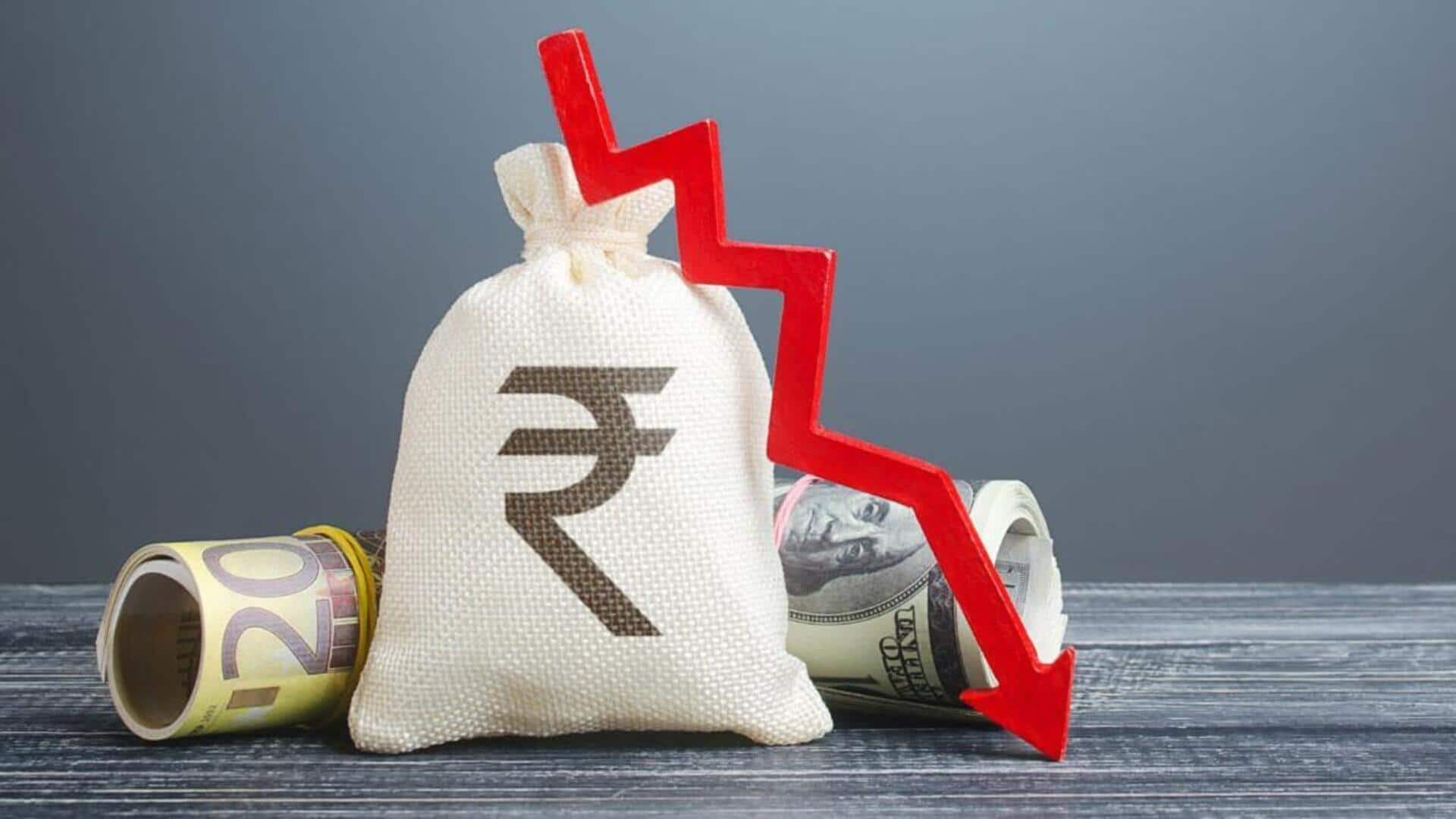
Indian rupee hits lifetime low, crosses 87-per-dollar for first time
What's the story
The Indian rupee breached the 87 per dollar mark for the first time today, a steep fall from its previous close of 86.61/$ on January 31.
The depreciation can largely be blamed on rising global trade tensions, sparked by new tariffs imposed by US President Donald Trump on imports from Mexico, Canada, and China.
The countries have retaliated or warned of counteractions.
Tariff details
Trump's tariffs and their impact on global trade
Trump has imposed a 25% tariff on most imports from Mexico and Canada and a 10% tariff on goods from China.
While Mexico and Canada have retaliated to these measures, China has warned of countermeasures.
These actions have further escalated global trade tensions, resulting in the depreciation of Indian rupee.
Currency pressure
Offshore Chinese yuan's decline adds pressure on emerging currencies
The offshore Chinese yuan, which rupee traders watch closely, has also fallen by 0.54% to 7.3585 per dollar.
The fall is putting further pressure on emerging market currencies such as the Indian rupee.
Meanwhile, the US dollar has gained against major counterparts and US Treasury yields have risen, adding to the rupee's woes.
Market predictions
Analysts predict further rupee depreciation if tariff war escalates
Meanwhile, Dilip Parmar, an FX research analyst at HDFC Securities, has suggested the rupee could face further depreciation if the tariff war intensifies.
Traders are closely monitoring global market developments for potential impacts on the Indian currency.
The Reserve Bank of India (RBI) will announce its policy decision on February 7, with expectations of a rate cut by 25 basis points.
Fiscal outlook
RBI's policy decision and fiscal deficit target
The benchmark 10-year bond yield ended at 6.7001% on January 31, a tad lower for the week. Traders expect this yield to move between 6.62%-6.74% until RBI's policy decision is announced.
Separately, the Indian government has set a fiscal deficit target of 4.4% of GDP for FY26, down from the current year's target of 4.8%.